free pages from our English Language software program
Synonyms – definition
![]() In a very general sense, synonyms are different words which have the same meaning.
In a very general sense, synonyms are different words which have the same meaning.
Examples
Word Synonym kingly royal pavement sidewalk youth youngster strong powerful
Use
![]() Strictly speaking, such words are rarely [if ever] quite identical to each other.
Strictly speaking, such words are rarely [if ever] quite identical to each other.
![]() There are bound to be semantic, stylistic, regional, or other differences between them.
There are bound to be semantic, stylistic, regional, or other differences between them.
![]() It is often said that if two words do have exactly the same meaning, one of them is likely to disappear.
It is often said that if two words do have exactly the same meaning, one of them is likely to disappear.
![]() Moreover, two words might be synonymous in one statement, and different in another.
Moreover, two words might be synonymous in one statement, and different in another.
![]() NB! Synonyms offer us variety in our expression.
NB! Synonyms offer us variety in our expression.
![]() Synonyms are usually referred to by linguists as ‘near synonyms’, because they argue that no two words mean exactly the same. If they did, one would probably disappear from use.
Synonyms are usually referred to by linguists as ‘near synonyms’, because they argue that no two words mean exactly the same. If they did, one would probably disappear from use.
![]() English is a language which has ‘borrowed’ from many varied sources during the course of its history. This has created a wide and heterogeneous lexicon. For example, terms which were originally French currently coexist with their Anglo-saxon equivalents:
English is a language which has ‘borrowed’ from many varied sources during the course of its history. This has created a wide and heterogeneous lexicon. For example, terms which were originally French currently coexist with their Anglo-saxon equivalents:
French Anglo-Saxon petite small tour trip chauffeur driver aperitif drink promenade front (as in sea-front) escritoire desk
![]() The French term usually carries a prestige value over that of the English equivalent, which is often seen as basic and even crass. This is because of the history of French dominance over the English as a result of the Norman Conquest.
The French term usually carries a prestige value over that of the English equivalent, which is often seen as basic and even crass. This is because of the history of French dominance over the English as a result of the Norman Conquest.
![]() During the period of French rule after 1066, a state of diglossia existed throughout the south of England. Diglossia means that two languages are used by one society, but applied to two discrete functions. French was used for matters of church and state, whereas English was used by the common people for personal and family discourse.
During the period of French rule after 1066, a state of diglossia existed throughout the south of England. Diglossia means that two languages are used by one society, but applied to two discrete functions. French was used for matters of church and state, whereas English was used by the common people for personal and family discourse.
![]() The legacy of this diglossia is that we have a multitude of synonyms or near-synonyms at our disposal.
The legacy of this diglossia is that we have a multitude of synonyms or near-synonyms at our disposal.
![]() However, it is usually preferable to state the same idea in a variety of styles, rather than to repeat one definitive term for one specific phenomenon.
However, it is usually preferable to state the same idea in a variety of styles, rather than to repeat one definitive term for one specific phenomenon.
![]() In Shakespeare’s King Lear, the king confesses to being a ‘foolish fond old man’. The use of two near synonyms has a poetic and dramatic effect, as one adjective has the effect of intensifying the other.
In Shakespeare’s King Lear, the king confesses to being a ‘foolish fond old man’. The use of two near synonyms has a poetic and dramatic effect, as one adjective has the effect of intensifying the other.
Self-assessment quiz follows >>>
© Roy Johnson 2004
English Language 3.0 program
Books on language
More on grammar
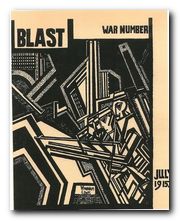 Almost without exception, the members of the Bloomsbury Group were opposed to the first world war. Their attitudes varied from outright pacifism through conscientious objection to quietism and a form of radical internationalism normally only found in figures such as Trotsky and Lenin. The origins of these attitudes – which were extremely unusual at the time – lay in the liberal, laissez-faire, free-thinking and non-religious beliefs which seemed to have spread from late nineteenth-century intellectuals such as
Almost without exception, the members of the Bloomsbury Group were opposed to the first world war. Their attitudes varied from outright pacifism through conscientious objection to quietism and a form of radical internationalism normally only found in figures such as Trotsky and Lenin. The origins of these attitudes – which were extremely unusual at the time – lay in the liberal, laissez-faire, free-thinking and non-religious beliefs which seemed to have spread from late nineteenth-century intellectuals such as 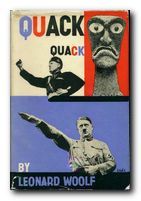
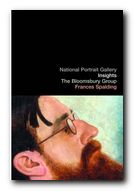
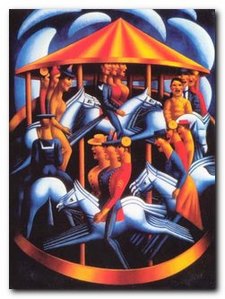 The painter
The painter 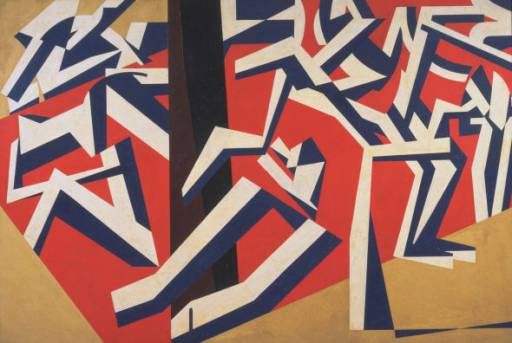
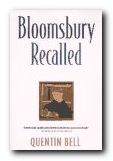
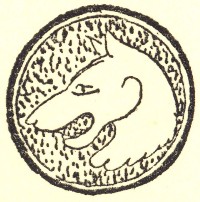
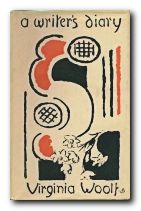 Many of the book jackets were designed by Virginia’s sister, the designer and painter
Many of the book jackets were designed by Virginia’s sister, the designer and painter 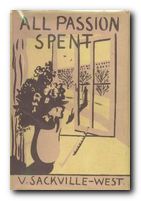 Virginia Woolf is now well known for her love-affair with fellow writer
Virginia Woolf is now well known for her love-affair with fellow writer 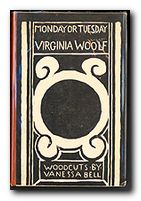 Curiously enough, as John Lehmann records in his account of these years, these disasters proved to be a benefit to the press. Its editorial offices and stock rooms were in the same building as its printers, and both were a long way away from London, where other publishers were suffering losses to their inventory as a result of air raids during the war. The odd thing is that despite paper rationing, sales rose, because of general shortages: “Books that in peacetime, when there was an abundance of choice, would have sold only a few copies every month, were snapped up the moment they arrived in the shops.”
Curiously enough, as John Lehmann records in his account of these years, these disasters proved to be a benefit to the press. Its editorial offices and stock rooms were in the same building as its printers, and both were a long way away from London, where other publishers were suffering losses to their inventory as a result of air raids during the war. The odd thing is that despite paper rationing, sales rose, because of general shortages: “Books that in peacetime, when there was an abundance of choice, would have sold only a few copies every month, were snapped up the moment they arrived in the shops.”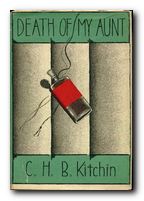 Disagreements rumbled on until after the war had ended. When the final split between them came about in 1946, Leonard solved the financial problem of raising £3,000 to keep the company afloat by persuading fellow publisher Ian Parsons of Chatto and Windus to buy out John Lehmann’s share. The Hogarth Press became a limited company within Chatto & Windus, on the strict understanding that Leonard Woolf had a controlling decision on what the Hogarth Press published.
Disagreements rumbled on until after the war had ended. When the final split between them came about in 1946, Leonard solved the financial problem of raising £3,000 to keep the company afloat by persuading fellow publisher Ian Parsons of Chatto and Windus to buy out John Lehmann’s share. The Hogarth Press became a limited company within Chatto & Windus, on the strict understanding that Leonard Woolf had a controlling decision on what the Hogarth Press published.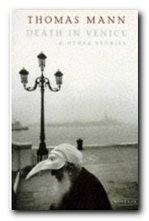 Thomas Mann’s Death in Venice (1912) is a classic novella – half way between a long story and a short novel. It’s a wonderfully condensed tale of the relationship between art and life, love and death. Venice provides the background for the story of a famous German writer who departs from his usual routines, falls in love with a young boy, and gets caught up in a subtle downward spiral of indulgence. The novella is constructed on a framework of references to Greek mythology, and the unity of themes, form, and motifs are superbly realised – even though Mann wrote this when he was quite young. Later in life, Mann was to declare – ‘Nothing in Death in Venice was invented’. The story was turned into a superb film by Luchino Visconti and an opera by Benjamin Britten.
Thomas Mann’s Death in Venice (1912) is a classic novella – half way between a long story and a short novel. It’s a wonderfully condensed tale of the relationship between art and life, love and death. Venice provides the background for the story of a famous German writer who departs from his usual routines, falls in love with a young boy, and gets caught up in a subtle downward spiral of indulgence. The novella is constructed on a framework of references to Greek mythology, and the unity of themes, form, and motifs are superbly realised – even though Mann wrote this when he was quite young. Later in life, Mann was to declare – ‘Nothing in Death in Venice was invented’. The story was turned into a superb film by Luchino Visconti and an opera by Benjamin Britten.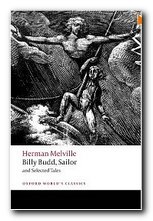 Herman Melville’s novella Billy Budd (1856) deals with a tragic incident at sea, and is based on a true occurence. It is a nautical recasting of the Fall, a parable of good and evil, a meditation on justice and political governance, and a searching portrait of three men caught in a deadly triangle. Billy is the handsome innocent, Claggart his cruel tormentor, and Captain Vere the man who must judge in the conflict between them. The narrative is variously interpreted in Biblical terms, or in terms of representations of male homosexual desire and the mechanisms of prohibition against this desire. His other great novellas Benito Cereno, The Encantadas and Bartelby the Scrivener (all in this collection) show Melville as a master of irony, point-of-view, and tone. These fables ripple out in nearly endless circles of meaning and ambiguities.
Herman Melville’s novella Billy Budd (1856) deals with a tragic incident at sea, and is based on a true occurence. It is a nautical recasting of the Fall, a parable of good and evil, a meditation on justice and political governance, and a searching portrait of three men caught in a deadly triangle. Billy is the handsome innocent, Claggart his cruel tormentor, and Captain Vere the man who must judge in the conflict between them. The narrative is variously interpreted in Biblical terms, or in terms of representations of male homosexual desire and the mechanisms of prohibition against this desire. His other great novellas Benito Cereno, The Encantadas and Bartelby the Scrivener (all in this collection) show Melville as a master of irony, point-of-view, and tone. These fables ripple out in nearly endless circles of meaning and ambiguities.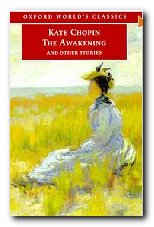 Artistically, the novella is often unified by the use of powerful symbols which hold together the events of the story. The novella requires a very strong sense of form – that is, the shape and essence of what makes it distinct as a literary genre. It is difficult to think of a great novella which has not been written by a great novelist (though Kate Chopin’s The Awakening might be considered an exception). Another curious feature of the novella is that it is almost always very serious. It’s equally difficult to think of a great comic novella – though Saul Bellow’s excellent Seize the Day has some lighter moments.
Artistically, the novella is often unified by the use of powerful symbols which hold together the events of the story. The novella requires a very strong sense of form – that is, the shape and essence of what makes it distinct as a literary genre. It is difficult to think of a great novella which has not been written by a great novelist (though Kate Chopin’s The Awakening might be considered an exception). Another curious feature of the novella is that it is almost always very serious. It’s equally difficult to think of a great comic novella – though Saul Bellow’s excellent Seize the Day has some lighter moments. Seize the Day (1956) focusses on one day in the life of one man, Tommy Wilhelm. A fading charmer who is now separated from his wife and his children, he has reached his day of reckoning and is scared. In his forties, he still retains a boyish impetuousness that has brought him to the brink of havoc. In the course of one climatic day, he reviews his past mistakes and spiritual malaise. Some people might wish to argue that this is a short novel, but it is held together by the sort of concentrated sense of unity which is the hallmark of a novella. It is now generally regarded as the first of Bellow’s great works, even though he went on to write a number of successful and much longer novels – for which he was awarded the Nobel Prize in 1976.
Seize the Day (1956) focusses on one day in the life of one man, Tommy Wilhelm. A fading charmer who is now separated from his wife and his children, he has reached his day of reckoning and is scared. In his forties, he still retains a boyish impetuousness that has brought him to the brink of havoc. In the course of one climatic day, he reviews his past mistakes and spiritual malaise. Some people might wish to argue that this is a short novel, but it is held together by the sort of concentrated sense of unity which is the hallmark of a novella. It is now generally regarded as the first of Bellow’s great works, even though he went on to write a number of successful and much longer novels – for which he was awarded the Nobel Prize in 1976.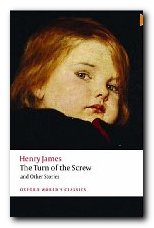 Henry James’ The Turn of the Screw (1897) is a classic novella, and a ghost story which defies easy interpretation. A governess in a remote country house is in charge of two children who appear to be haunted by former employees who are now supposed to be dead. But are they? The story is drenched in complexities – including the central issue of the reliability of the person who is telling the tale. This can be seen as a subtle, self-conscious exploration of the traditional haunted house theme in Victorian culture, filled with echoes of sexual and social unease. Or is it simply, “the most hopelessly evil story that we have ever read”? This collection also includes James’s other ghost stories – Sir Edmund Orme, Owen Wingrave, and The Friends of the Friends.
Henry James’ The Turn of the Screw (1897) is a classic novella, and a ghost story which defies easy interpretation. A governess in a remote country house is in charge of two children who appear to be haunted by former employees who are now supposed to be dead. But are they? The story is drenched in complexities – including the central issue of the reliability of the person who is telling the tale. This can be seen as a subtle, self-conscious exploration of the traditional haunted house theme in Victorian culture, filled with echoes of sexual and social unease. Or is it simply, “the most hopelessly evil story that we have ever read”? This collection also includes James’s other ghost stories – Sir Edmund Orme, Owen Wingrave, and The Friends of the Friends.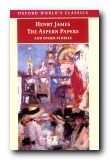 The Aspern Papers (1888) also by Henry James, is a psychological drama set in Venice which centres on the tussle for control of a great writer’s private correspondence. An elderly lady, ex-lover of the writer seeks a husband for her plain niece, whereas the potential purchaser of the letters she possesses is a dedicated bachelor. Money is also at stake – but of course not discussed overtly. There is a refined battle of wills between them. Who wins out? Henry James keeps readers guessing until the very end. The novella is a masterpiece of subtle narration, with an ironic twist in the outcome. This collection of stories also includes The Private Life, The Middle Years, and The Death of the Lion which is another classic novella.
The Aspern Papers (1888) also by Henry James, is a psychological drama set in Venice which centres on the tussle for control of a great writer’s private correspondence. An elderly lady, ex-lover of the writer seeks a husband for her plain niece, whereas the potential purchaser of the letters she possesses is a dedicated bachelor. Money is also at stake – but of course not discussed overtly. There is a refined battle of wills between them. Who wins out? Henry James keeps readers guessing until the very end. The novella is a masterpiece of subtle narration, with an ironic twist in the outcome. This collection of stories also includes The Private Life, The Middle Years, and The Death of the Lion which is another classic novella.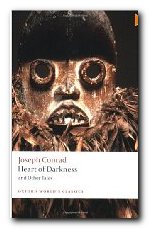 Joseph Conrad’s Heart of Darkness (1902) is a tightly controlled novella which has assumed classic status as an account of late nineteenth century imperialism and the colonial process. It documents the search for a mysterious Kurtz, who has ‘gone too far’ in his exploitation of Africans in the ivory trade. The reader is plunged deeper and deeper into the ‘horrors’ of what happened when Europeans invaded the continent. This might well go down in literary history as Conrad’s finest and most insightful achievement. It is certainly regarded as a classic of the novella form, and a high point of twentieth century literature – even though it was written at its beginning. This volume also contains the story An Outpost of Progress – the magnificent study in shabby cowardice which prefigures ‘Heart of Darkness’. The differences between a story and a novella are readily apparent here if you read both texts and compare them.
Joseph Conrad’s Heart of Darkness (1902) is a tightly controlled novella which has assumed classic status as an account of late nineteenth century imperialism and the colonial process. It documents the search for a mysterious Kurtz, who has ‘gone too far’ in his exploitation of Africans in the ivory trade. The reader is plunged deeper and deeper into the ‘horrors’ of what happened when Europeans invaded the continent. This might well go down in literary history as Conrad’s finest and most insightful achievement. It is certainly regarded as a classic of the novella form, and a high point of twentieth century literature – even though it was written at its beginning. This volume also contains the story An Outpost of Progress – the magnificent study in shabby cowardice which prefigures ‘Heart of Darkness’. The differences between a story and a novella are readily apparent here if you read both texts and compare them.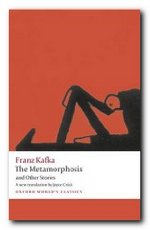 Franz Kafka’s Metamorphosis is the account of a young salesman who wakes up to find he has been transformed into a giant insect. His family are bewildered, find it difficult to deal with him, and despite the good human intentions struggling underneath his insect carapace, they eventually let him die of neglect. He eventually expires with a rotting apple lodged in his side. This particular collection also includes Kafka’s other masterly transformations of the short story form – ‘The Great Wall of China’, ‘Investigations of a Dog’, ‘The Burrow’, and the story in which he predicted the horrors of the concentration camps – ‘In the Penal Colony’.
Franz Kafka’s Metamorphosis is the account of a young salesman who wakes up to find he has been transformed into a giant insect. His family are bewildered, find it difficult to deal with him, and despite the good human intentions struggling underneath his insect carapace, they eventually let him die of neglect. He eventually expires with a rotting apple lodged in his side. This particular collection also includes Kafka’s other masterly transformations of the short story form – ‘The Great Wall of China’, ‘Investigations of a Dog’, ‘The Burrow’, and the story in which he predicted the horrors of the concentration camps – ‘In the Penal Colony’.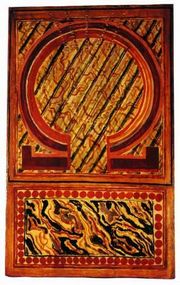 It opened in 1913 at the worst possible time in commercial terms, at 33 Fitzroy Square in the heart of Bloomsbury.
It opened in 1913 at the worst possible time in commercial terms, at 33 Fitzroy Square in the heart of Bloomsbury. 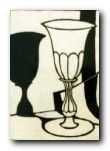 At the launch of the project, artist and writer Wyndham Lewis was also a member; but he quickly split away from the group in a dispute over Omega’s contribution to the Ideal Homes Exhibition. Lewis circulated a letter to all shareholders, making accusations against the company and Roger Fry in particular, and pouring scorn on the products of Omega and its ideology. This subsequently led to his establishing the rival Vorticist movement and the publication in 1916 of its two-issue house magazine, BLAST.
At the launch of the project, artist and writer Wyndham Lewis was also a member; but he quickly split away from the group in a dispute over Omega’s contribution to the Ideal Homes Exhibition. Lewis circulated a letter to all shareholders, making accusations against the company and Roger Fry in particular, and pouring scorn on the products of Omega and its ideology. This subsequently led to his establishing the rival Vorticist movement and the publication in 1916 of its two-issue house magazine, BLAST.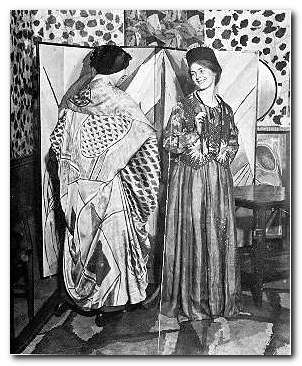
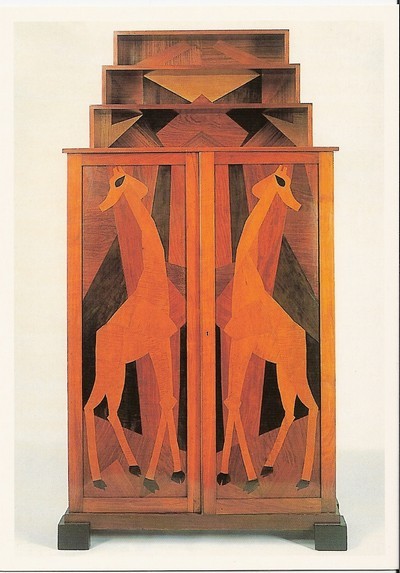
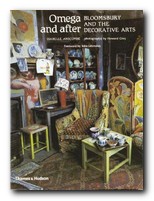
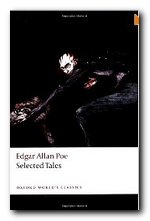
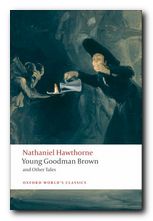
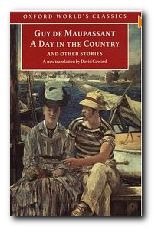
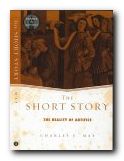
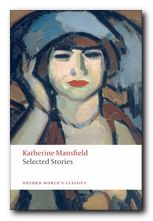 Katherine Mansfield
Katherine Mansfield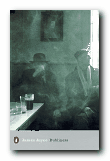
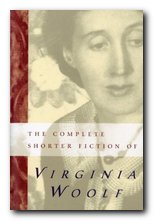
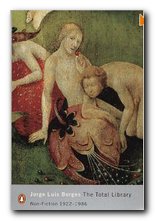
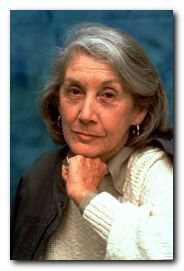 Nadine Gordimer
Nadine Gordimer